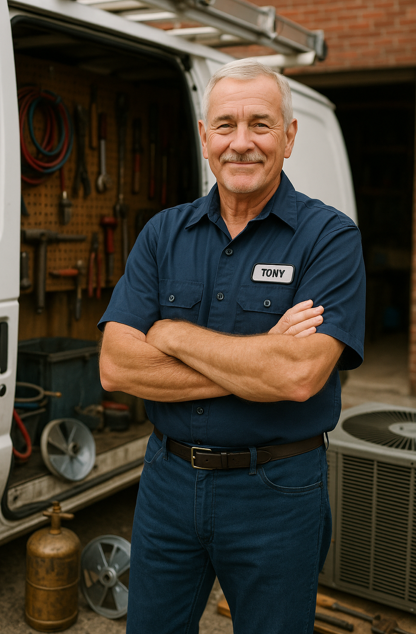Introduction: What’s a Package Unit Anyway?
Alright folks, let's start with the basics. An HVAC package unit is an all-in-one system that handles both heating and cooling. Unlike split systems, where the furnace and AC components are installed separately, a package unit keeps everything compact, usually on a slab outside or up on the roof.
They’re great for small homes, mobile homes, and light commercial buildings — and if you're dealing with limited indoor space or just want a cleaner install, a packaged system might just be your best bet.
Types of Package Units
Package units aren't one-size-fits-all. Here’s a quick breakdown of the common types on the market:
1. Gas Package Unit
A gas pack HVAC system combines an air conditioner and gas furnace in one outdoor unit. It's an ideal choice if you're looking for strong heating performance in colder climates.
Want to learn more about how these units handle extreme temps? This guide from Trane offers a solid primer on how gas packs deliver energy-efficient heat and cooling.
2. Heat Pump Package
A heat pump package offers heating and cooling in one — using refrigerant to move heat instead of burning fuel. It’s excellent for milder climates where extreme winter cold isn’t the norm.
If you’ve been curious about how these compare to traditional heating systems, Energy.gov’s explainer on heat pumps is a great resource.
3. Dual-Fuel or Hybrid Systems
Some modern units combine a gas furnace with a heat pump — giving you efficiency and reliability regardless of the season.
Why Size Matters: From 1 Ton to 3 Ton Gas Package Units
Choosing the right size system isn’t guesswork — it's about square footage, insulation, and local climate. Here’s a general breakdown:
-
1 Ton Package Unit: Covers around 600–800 sq ft. Often used in compact homes or office trailers.
-
1.5 Ton Heat Pump Package Unit: Good for 800–1,000 sq ft.
-
2 Ton Gas Package Unit: Handles 1,000–1,200 sq ft.
-
3 Ton Gas Package Unit: Designed for homes in the 1,200–1,800 sq ft range.
If you're unsure what size you need, check out HVAC.com’s AC size calculator for a handy way to estimate your cooling load.
The Ductwork Factor
Let’s not forget the unsung hero of your HVAC system: package unit ductwork. The best unit in the world won’t help you if your ductwork is leaky, undersized, or improperly routed.
According to the Building America Solution Center, up to 30% of conditioned air can be lost through poorly sealed ductwork. That’s like throwing money out the window every time you turn the system on.
When installing a new gas pack heating and cooling system, always have your ductwork inspected and upgraded if necessary.
Common Applications: Where Package Units Shine
-
Mobile homes & modular homes
-
Small commercial buildings
-
Retail storefronts
-
Homes with no basement or attic space
-
Roof installations in urban environments
And while many folks think a gas package or heat pump package system is just for residential use, don’t sleep on the flexibility these systems offer for light commercial spaces.
Why It Pays to Go with a Trusted Name
You’ll hear a lot of brands thrown around — Goodman, Carrier, Trane, and Lennox are just a few. But here’s the thing: performance varies wildly, especially when it comes to reliability, warranty support, and energy efficiency.
That’s why I recommend checking out the Goodman 3 Ton 14.5 SEER2 R-32 System. It delivers the convenience of a packaged solution without skimping on modern features like:
-
R-32 refrigerant for lower global warming potential
-
SEER2-compliant efficiency rating
-
Quiet operation and durable construction
-
Goodman’s reputation for easy maintenance and parts availability
Plus, it’s compact enough to work in tight installations but powerful enough to keep a 1,500–1,800 sq ft home comfortable year-round.
Heat vs Cool: What’s the Better Bet?
If you live in Florida or Texas, that heat pump package is probably your best move. But if you’re in the Midwest, Mountain West, or Northeast? A gas package unit will outperform when the mercury drops.
This breakdown from HVAC.com walks you through how to choose based on your climate zone. Bookmark it.
Pros and Cons of Packaged Systems
✅ Pros:
-
Space-saving install
-
Simpler maintenance
-
Fewer components to service
-
Cleaner aesthetic
❌ Cons:
-
Can be louder than split systems
-
Exposed to weather (which can affect lifespan)
-
Less customizable than split configurations
Final Thoughts: Don’t Just Buy — Buy Smart
When shopping for your next 1 ton package unit, 3 ton gas package unit, or even a gas pack HVAC setup for a light commercial application, don’t just chase the lowest price. Look at:
-
Brand reputation
-
Refrigerant type (R-32 is the smart play for the future)
-
Warranty coverage
-
Compatibility with existing package unit ductwork
-
Installer experience
And most importantly — make sure you size your system right, get that ductwork checked, and plan for long-term maintenance.
Whether you're a seasoned contractor or a first-time homeowner, the right packaged system can give you years of reliable comfort without all the moving parts.
Need Help Choosing the Right Package Unit?
Still stuck between a 2 ton gas package unit or a 1.5 ton heat pump package setup? Don’t guess — talk to a trusted HVAC pro or check out tools like HVAC.com's Load Calculator.
And when you’re ready to make a smart move on a system that balances performance, reliability, and eco-friendly refrigerant, consider giving the Goodman 3 Ton 14.5 SEER2 R-32 System a hard look.
You’ll thank yourself when summer rolls around — and winter doesn’t bite back nearly as hard.
Stay cool, stay warm,
Tony Marino







